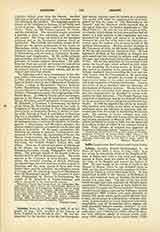

Lehnin, Abbey of, founded in 1180 by Otto II, Margrave of Brandenburg, for Cistercian monks. Situated about eight miles to the southeast of Brandenburg, its church was a fine example of Romanesque architecture. It is not of great importance in history save for the famous “Vaticinium Lehninense”, supposed to have been written in the thirteenth or fourteenth century by a monk named Hermann. Manuscripts of the prophecy, which was first printed in 1722, exist in Berlin, Dresden, Breslau, and Gottingen. It begins by lamenting the end of the Ascanian line of the margraves of Brandenburg, with the death of Henry the Younger in 1319, and gives a faithful portraiture of several of the margraves till it comes to deal with Frederick William I. Here the writer leaves the region of safety and ceases to make any portraiture of the people about whom he is prophesying. Frederick III, who became first King of Prussia in 1701, he makes suffer a terrible loss, and he sends Frederick William II to end his days in a monastery. He makes Frederick the Great die at sea, and ends the House of Hohenzollern with Frederick William III. A Catholic ruler, who reestablishes Lehnin as a monastery (it had been secularized at the Reformation), is also made to restore the union of the Empire. The work is anti-Prussian, but the real author cannot be discovered. The first to unmask the fraud was Pastor Weiss, who proved in his “Vaticinium Germanicum” (Berlin, 1746) that the pseudo-prophecy was really written between 1688 and 1700. Even after the detection of its true character, attempts were made to use it in anti-Prussian polemics. Its last appearance was in 1848.
R. URBAN BUTLER

